Often, gardeners, speaking about stambling raspberries, use the name "tree". True, Stumbal Malina resembles a tree, but a bush of plants can reach height of 2 m. Inexperienced gardeners sincerely believe that the raspberry bush can grow as the most real tree, although it is certainly not. Stambling raspberries from small bushes is distinguished by its endurance and large size.
Description of the raspberry tree
Raspberry tree during cultivation does not need a support, which is one of his main advantages. The branches of stammer raspberries can bend under the severity of berries, but they do not fall on the ground due to shortened intersals. A tree is not the name and format of the plant, but the method of cultivation of stammer raspberry.
When growing strambed raspberries, the fruitful branches cut off, and the top of a young escape pinch. As a result, it turns out an empty and very dense bush. The number of side shoots in such bushes reaches 10 pcs. And after the autumn appeal of leaves, the bustice resembles a tree, for which he received its name.
The main advantage of the strambed raspberry is that it gives a greater harvest than a finely neighing raspberry. Therefore, recently daccias prefer a straampic option.
Maline tree varieties
There are many varieties of raspberry wood, but the most popular are the raspberry tree Gold, Tarusa, a fairy tale, a fastening and galaxy. These bushes reach 200 cm in height, differ in thick shoots and high yields.
But the undisputed leader in varieties is the raspberry tree of Tarusa because of his features:
- With proper trimming from the Tarus tree, you can collect 2 crops of raspberries for season 1.
- Berries are large, proper elongated shape, easily separated from the bush. Possess a gentle taste, well stored and with honor withstand transportation.
- The root system resembles the roots of the tree and does not spread across the site.
- Thick shoots make it possible to grow the TRUUS tree without supports.
- Frost resistance and immunity to many types of diseases.
- Leaves of beautiful shape and growth, reaching 1.5 m, allow you to use a tree like a decorative plant.
Where to get raspberry seedlings?
The reproduction of the raspberry tree is most often produced by overlap. Very often, private sellers under the guise of stramb varieties of raspberries sell incomprehensible pigs from abandoned sites, which will not give and minimal crop percent. Therefore, when buying a raspberry church seedlings, we recommend adhere to such recommendations:
- Purchase from familiar or neighbors. In this case, you see maternal raspberry bushes, which will get seedlings.
- Purchase in nurseries or horticultural stores. Here everything is without deception, but just in case, keep the check.
- Purchase on the road or the "good grandmother" is excluded, because the seedling is not seen what it is for raspberries: a strabetic, classical or bad variety.
- When buying seedlings at the market ask the seller to the documents of goods bought.
How to plant raspberry tree on the site: pre-fertilization and watering
Before planting any variety shtambovoy raspberries need to fertilize the soil, which ensures stable growth and living plants. For these purposes apply mineral and organic fertilizers, and provide stable after planting and irrigating. When excessive water inflow raspberry tree does not get sick, but its roots to rot and then die stam raspberry.
The choice of location for planting raspberry tree
The best place for all sorts shtambovoy raspberries - a well-lit place or shading, no stagnant water. Also, the site is not blown drafts, and in winter it is well snowing.
Stam raspberry heap arranged by grouping trees near the fence, porch. Crimson trees resistant, but the extra protection it can not hurt. Between the bushes and the wall distance should be at least 1 meter, and a plantation on the south side.
It should be placed away from the raspberry plants that are affected with it a single disease: tomatoes, strawberries and potatoes. Did not land raspberries to the soil in which other variety of berries grew before. Only after 3-4 years can be planted raznosortnyh raspberries in the same soil. A raspberry growing in thickets of fertile trees leads to lower yields and raspberry poorly developed.
Soil and correct landing shtambovoy raspberries
The ground for this raspberries should be loose, with moderate humidity and plenty of fertilizer. Raspberry stam survives well in acidic soil, but will have excess acid limed (1 sq. M. The soil 500 g lime).
Proper planting of raspberries stam tree looks like this: pull up deep trench, which is laid peat, humus, compost and other organic matter. After that, add organic matter to the ash and complex mineral fertilizers, and each layer is covered with earth. It obtained kind of the cake of the nutrients and to limit the spread of roots, one raspberry 40h15 cm cell diameter obkladyvayut slate. Slate sheets should protrude above the beds.
When planting raspberries stam?
The raspberries grown in containers are planted throughout the year, but the seedlings are exclusively in autumn or spring. The seedling is cut into a height of 40 cm, after which it is planted in a pre-prepared and fertilized cell, blocking the roots by 4 cm, and the ground part of the bush straightened. The distance between the seedlings is at least 1 m, and between the rows of 1.5-2 m. During the first 2 weeks, the seedlings are feeding with liquid fertilizers and water after 2-3 days.
When a seedling reaches a height of 25 cm, the first part of the ground escape is removed to improve the accessibility of the bushes. After the second year of landing, the strambed raspberry can be strengthened by taking the shoots to the tensioned galvanized wire.
CARE FOR ADULT STEMBUNY MALINA
In the spring of the soil around the raspberry trek, sprinkled with ashes at the rate of 20 g per 1 square meter. M Earth, even if adding more ash - it will not be harm. Before sprinkling the soil, the forks are rearranged to a depth of 7 cm, because the roots of the raspberry are shallow. Mulching is performed by organic substances, such as manure, peat, humid, straw. Organizer covers the entire area of \u200b\u200bthe plant with a thickness of 10 cm.
The entire piglery appears near the stamping raspberry should be removed. The pigle is the main enemy of the plant and in the spring it is cut off by a shovel by 10-15 cm. Also, these varieties of raspberries are very well reacting to undercaming by manure, so before flowering the strambed raspberry is inflicted with a cowboy.
Trimming bushes
The formation of the bush is achieved by double trimming. The first is performed in May, when plants reach 60 cm in height, the bushes are plugged and shorten on 5 cm. After pinching in the leafy sinuses, ramifications formed lateral shoots are formed. These shoots pinch into the second spring, removed by 15 cm of branching. After this procedure, branches appear, from which the rich harvest of berries is collected. 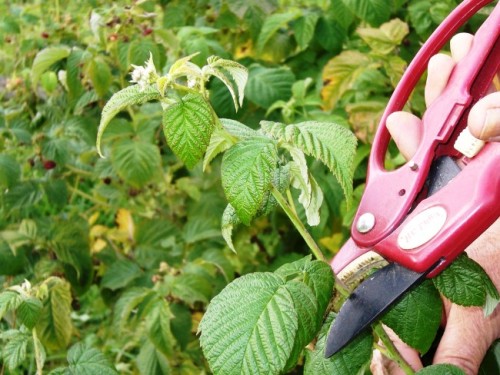
Feeding stammer raspberry in autumn
Annually, in the fall, 3-4 buckets of manure are made under each bush of stammer raspberry, which are distributed throughout a row of bushes. After that, the soil is covered with sawdust, and in the absence of manure, it is replaced by peat mixed with 100-200 ml of urea. But nitrogen fertilizers, except for lateral non-blocking shoots, do not give anything. Berries are formed in the current season, and the pruning method of the gardener selects depending on the crop that wishes to collect.
Watering Stammer Malina
It is not necessary to forget about watering, especially it is important during the period of tying and ripening berries. After harvesting the autumn harvest, the obstacle stems are subject to trimming without hemp, and young shoots in August-September shorten up to 15 cm. Young people after shorting time to prepare for winter. If there are no rains in October, it is made abundant watering. 
Cooking bushes for wintering
At the end of October, all bushes of stammer raspberry bend to the ground, taking them. So you provide a comfortable wintering for each bush.
Summing up, it is worth saying that strambed raspberries or a raspberry tree is a plant, loving organic fertilizers and proper care. Pruning, uniform watering and preparation for wintering in the next season will provide a generous harvest of raspberry berries.

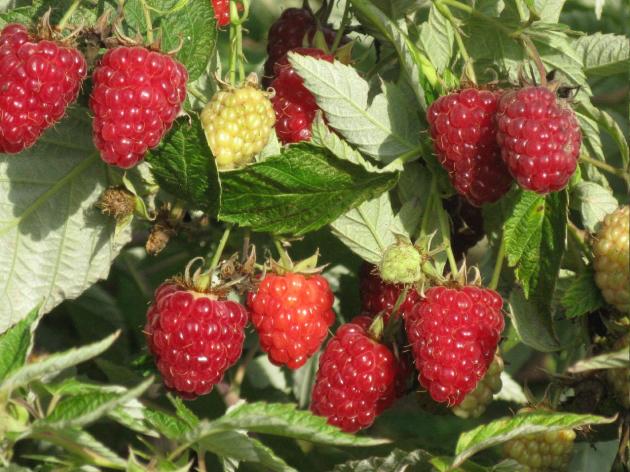
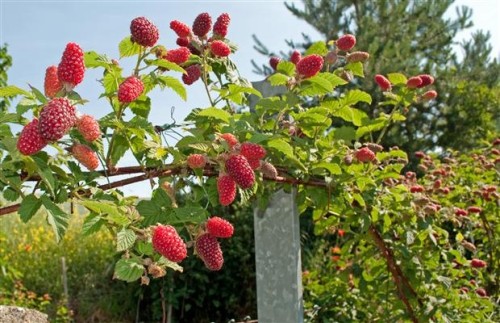
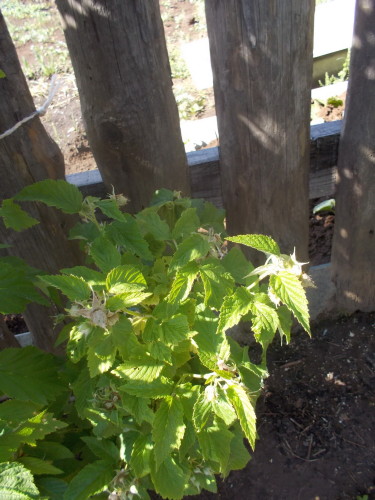
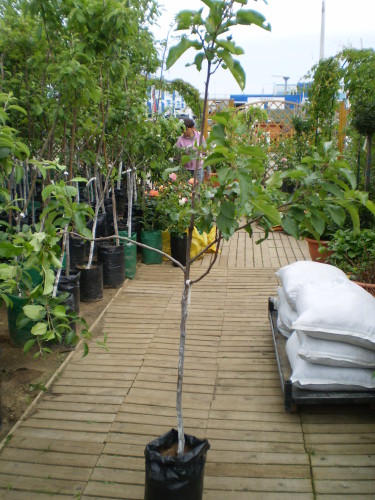
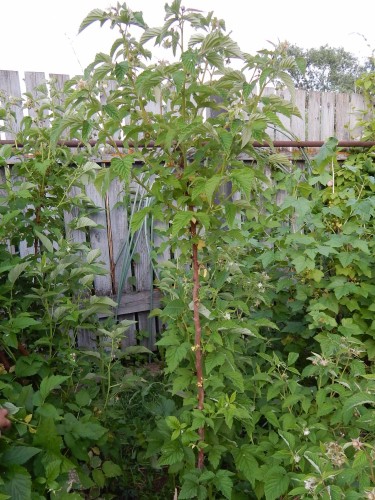
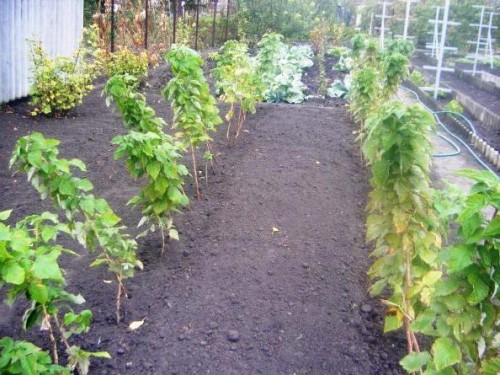
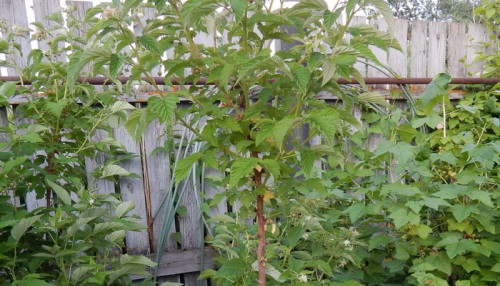
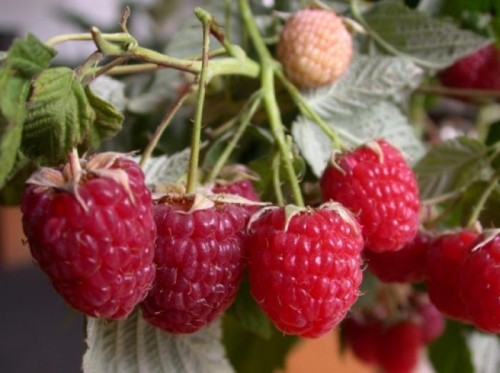
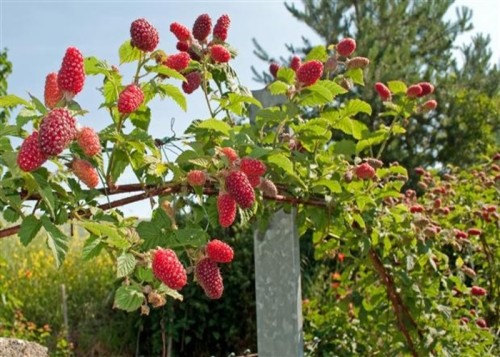












 Start a discussion ...
Start a discussion ...